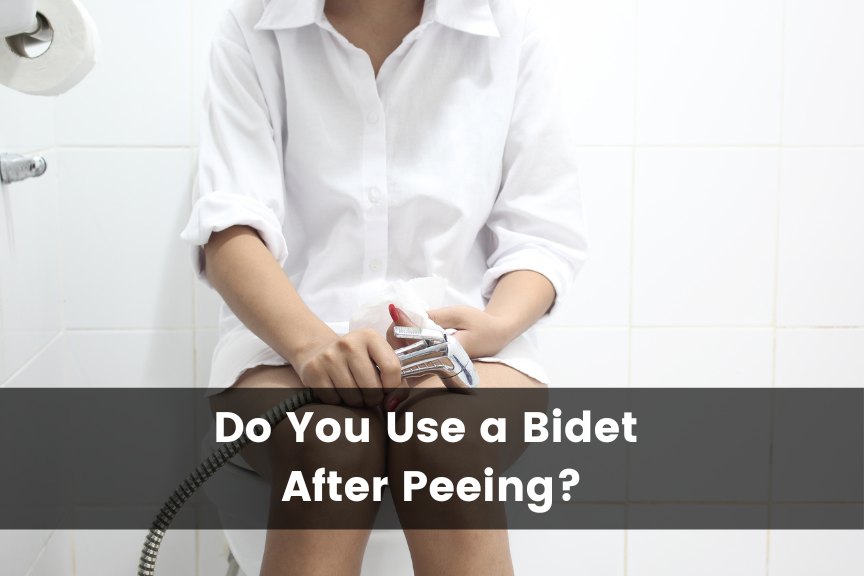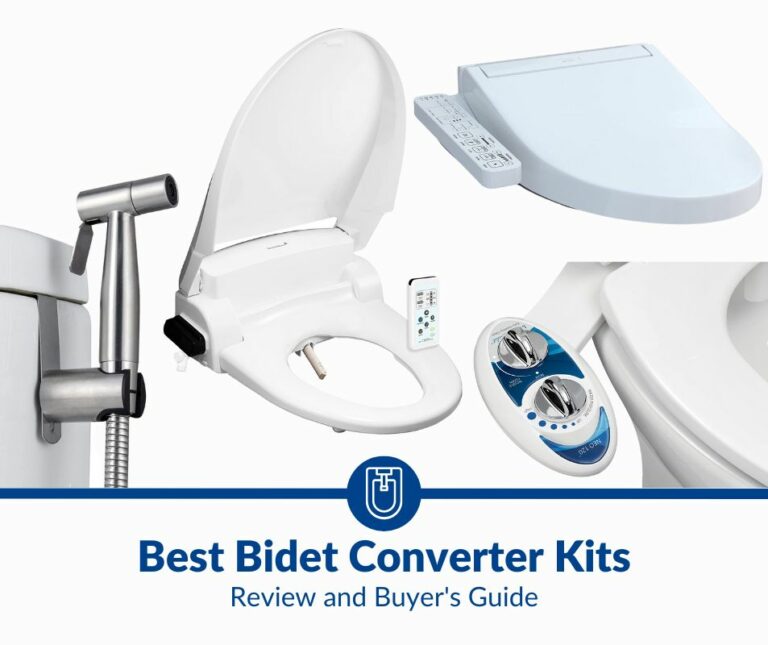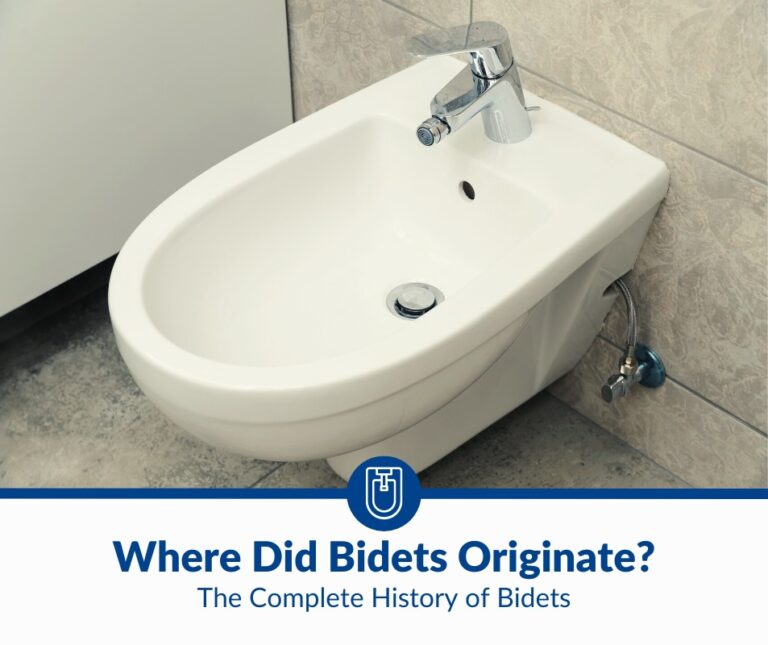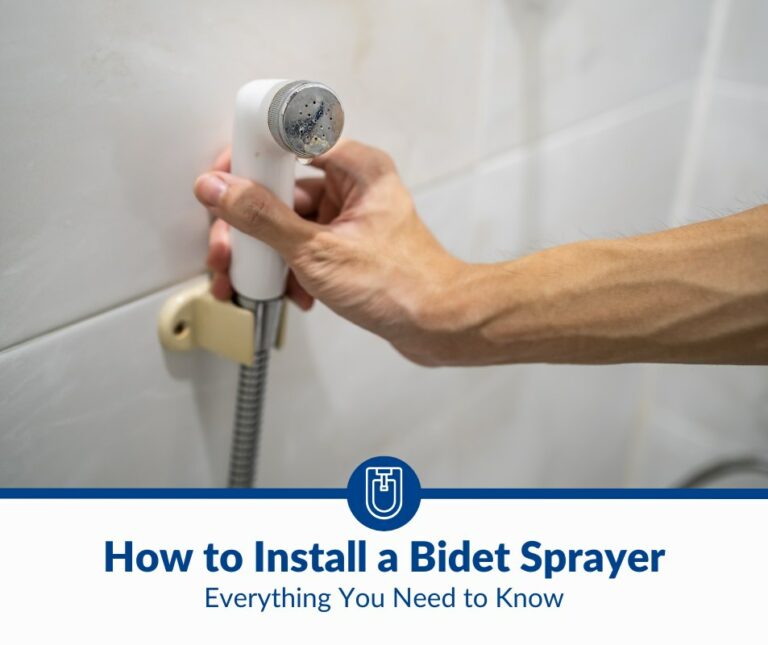Do You Use a Bidet After Peeing?
Most people with a bidet know just how convenient it is to have one. There’s nothing like having something to clean your privates up when you’re done with your “business” in the bathroom. So, does it make sense to use one after peeing?
Yes, you can use a bidet after peeing. Some benefits of using one include maintaining good hygiene and eliminating the smell of urine. After using a bidet, dry yourself properly to prevent rashes or yeast infections. It is also essential to do things like washing your hands thoroughly afterward.
The rest of this article covers this topic in greater detail, including who should use a bidet after peeing. I will also highlight when you shouldn’t use a bidet and take you through the proper etiquette before, during, and after, to help you understand appropriate bidet use.
Who Should Use a Bidet After Peeing?
There’s no hard and fast rule regarding who should use a bidet and who shouldn’t. However, based on its design, a bidet can be more beneficial to certain people.
Women, children, the elderly, and people with disabilities should use a bidet after peeing. It is a convenient way to clean up after yourself compared to the alternative.
Cleaning up with a bidet isn’t a common practice among men, but they should nonetheless consider it as it helps ensure good hygiene and prevent bad odor (which may come from drops of urine soaking into the underwear).
Urine contains a small amount of bacteria, which can multiply rapidly if not wiped away. This can lead to foul smells and infections within a few hours. Yeast also thrives in damp areas, so some people may experience a yeast infection if they don’t clean up properly after peeing.
Why Women Should Use a Bidet After Peeing
For most women, washing up with a bidet after peeing is better than wiping. Dry wiping alone may not completely clean all the urine from the genital area. In some cases, a few droplets of urine may remain on pubic hair or skin and get soaked into the underwear.
This is unhygienic because there’s a risk of contracting a urinary tract or yeast infection, and it can also produce a foul smell.
Bidet Use During Menstruation
Using a bidet during menstruation helps women achieve a thorough and gentle cleanse. It’s also a lot safer than alternatives like wet wipes that may contain harsh ingredients.
Additionally, women can cut back on toilet paper consumption during this time of the month. Finally, cleaning up with a bidet also leaves one feeling fresh and clean (which isn’t the case when you use regular tissue paper).
It’s also perfectly safe to use a bidet during periods, even with a tampon or menstrual cup. In fact, washing menstrual cups in the bidet is an effective way to get them cleaned.
Postpartum Bidet Use
After giving birth, many women may experience pain or a burning sensation in the vaginal area. This feeling is significantly worse for those who experience a perineal tear or episiotomy.
Using a bidet after peeing helps to clean the sore region and relieve the soreness at the same time. A bidet also ensures a thorough cleanse, preventing infection in the already vulnerable area.
Another crucial benefit of using a bidet after peeing (especially for new mothers) is that it gets the job done quickly and with minimal effort. This factor alone can make a recovery from pain easier and more manageable.
Why Children Should Use a Bidet After Peeing
A bidet is an effective tool for helping children clean themselves properly after peeing. In fact, it’s a better alternative to wiping, considering that most small children don’t know how to clean themselves properly.
You can include bidet training as part of your child’s potty training routine. However, you must reduce the water pressure and temperature to a comfortable level for your child.
Some manufacturers make it easier by including a child-safe setting. If your bidet doesn’t have this setting, remember to adjust the water before allowing children to use it, so they don’t get hurt.
Why The Elderly and Disabled Should Use a Bidet After Peeing
A bidet is an excellent solution for the elderly and disabled because it ensures a thorough cleanse without requiring a wide range of motion. In particular, they’ll want a bidet seat that can be installed on a regular toilet seat.
For those who have trouble cleaning themselves properly after peeing, using a bidet can help boost their confidence thanks to better personal hygiene. It also makes them less reluctant to use the toilet (most old and disabled people find this a chore) as they feel clean and refreshed right after.
What to Keep in Mind When Using a Bidet
There’s a significant risk of contracting a yeast infection when you don’t wipe your genital area properly after using a bidet. That’s because yeast and bacteria thrive in warm, moist areas. Therefore, you must ensure that you dry yourself properly after cleaning up by using a dedicated towel or toilet paper.
If you’re using a public bidet or one outside your home, never use the towels inside the bathroom to dry yourself. That’s because those are meant to wipe your hands, not the bits that get soiled after you “answer the call of nature.” Also, it’s unhygienic to use towels someone else used, regardless of what they wiped them on.
Instead, pat yourself dry using toilet paper.
Who Should Not Use a Bidet After Peeing
Bidets are a helpful tool to keep you clean and hygienic. However, they aren’t for everyone, and people with infections or a weak immune system should avoid using them because of the risks involved. These risks include.
- Catching a bacterial infection from handling a contaminated bidet part
- Potentially upsetting vaginal microflora, causing yeast infections
- A possible skin infection from sitting on unclean bidet seats
- A yeast infection from not drying properly, which can happen to people more susceptible to contracting one
Proper Bidet Etiquette: What You Should Know
Bidet etiquette essentially means the acceptable or proper way to use a bidet outside your home (it would be best to apply these rules within your home as well). Proper bidet etiquette ensures that the seat remains clean, comfortable, and ready for the next user.
Below, we’ve broken down the steps involved with proper bidet etiquette.
Proper Etiquette Before Using a Bidet
There’s a certain way to set yourself up before using a bidet. Ensure you do these things:
- If you’re in someone else’s home, ask permission to use their bidet. Doing so is courteous and respectful and your host can guide you on how to use it properly if they don’t mind.
- Use the toilet first, and dispose of tissue properly. You shouldn’t use a free-standing bidet like a toilet seat or throw tissue inside.
- Wipe the nozzle and faucet with a tissue before use. Doing this will reduce the cross-contamination of bacteria that previous users may have left.
- Cover the bidet seat with a layer of tissue or clean it with a damp tissue. Again, this will prevent cross-contamination of potentially harmful bacteria.
- Check the pressure and temperature settings and ensure they’re comfortable so you don’t get hurt by hot water or excessive pressure.
Proper Etiquette While Using a Bidet
When you’re “doing your business” on a bidet, here are a few things to remember.
- Position yourself in line with the water jet by squatting or straddling over the bidet, with your front side facing the nozzle.
- Hold this position for about 20 seconds (after peeing) to a minute (after pooping) to give the water ample time to clean you.
- Turn off the bidet once you’re done to avoid wasting water.
- Pat yourself dry with a tissue, and dispose of it in a bin or flush it down the toilet if it’s safe. You can also use the air drying feature if the bidet has one. As I’ve mentioned, never use other people’s towels to dry yourself, as it’s unhygienic.
Proper Etiquette After Using a Bidet
After using the bidet, rinse the bowl by letting the water flow for a while after cleaning up. Some bidets even have a self-rinse program you can use instead. Rinsing the bidet washes off urine or fecal matter down the drain and protects future users from contamination.
Once you’ve cleaned the bidet, wash your hands with soap and water to eliminate potentially harmful bacteria and other microorganisms.
Conclusion
Anyone can use a bidet after peeing, but it’s more common among women, children, the elderly, and the disabled. Bidets generally promote good hygiene and prevent the formation of a foul and embarrassing odor. They also clean you better than dry wiping would, and don’t cause genital irritation like most wet wipes.
After using a bidet, you must dry your “privates” properly to reduce the chances of a yeast infection. Also, be sure to practice proper etiquette and stay mindful of other people so they can use the bidet once you’re done.







